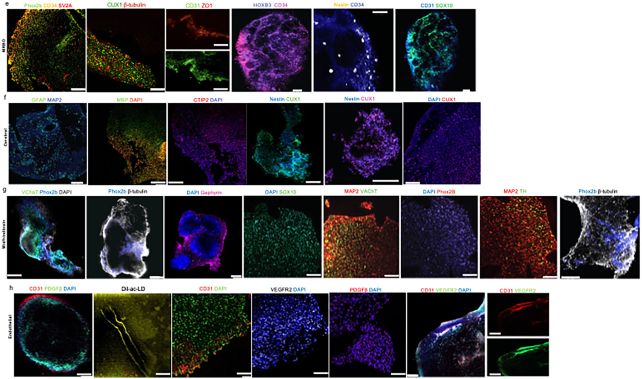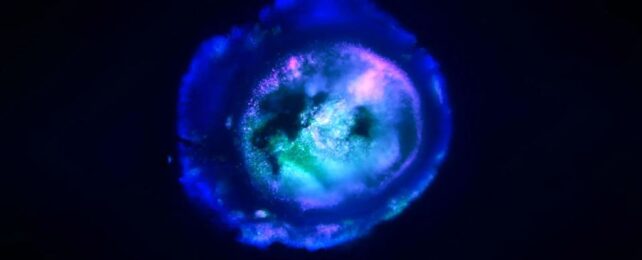A tiny blob of gelatinous tissue sitting in a dish represents a giant leap forward in human brain research.
Known as an organoid, it's a living 3D model of a human organ; one of the first to constitute multiple different regions of the brain. Moreover, those regions connect up with each other and light up with neuronal activity, comparable to the brain of a human fetus at 40 days gestation.
"We've made the next generation of brain organoids," says biomedical engineer Annie Kathuria of Johns Hopkins University.
"Most brain organoids that you see in papers are one brain region, like the cortex or the hindbrain or midbrain. We've grown a rudimentary whole-brain organoid; we call it the multi-region brain organoid (MRBO)."
Related: Scientists Grew Stem Cell 'Mini Brains' And Then The Brains Sort-of Developed Eyes

Organoids are not full organs, but scaled-down versions grown from cell and tissue cultures in a laboratory setting. Their purpose is to allow scientists to research changes, differences, and interactions with, say, new medications, without needing to probe a living human.
This is especially important for brains. The most complex organ in the human body, it is also the most poorly understood. You can't just go around poking a person's brain willy-nilly – you could break something important extremely easily – so brain organoids provide a crucial platform to help understand brain function, disease, and neurological conditions such as autism and schizophrenia.
To grow their brain organoid, the researchers take blood and skin cells from living humans to create induced pluripotent stem cells. These are cells that are induced to return to a 'stem' state, from which they can develop into any type of cell in the human body.
These stem cells are then cultured to diversify and transform into various cell types from different regions of the human brain, all in their own separate petri dishes. Only once each of these individual regions are sufficiently developed are they joined together with sticky proteins that act like a sort of glue that allows the separate tissues to form connections.
Each organoid is pretty small, consisting of around 6 to 7 million neurons, compared to the tens of billions of neurons in a fully developed human brain. Though magnitudes simpler than fully developed brains, they present a reasonable model for how the full human brain operates as an integrated network.

There were a few exciting findings. The blood vessels in the connected organoid grew and began to form new blood vessels. The researchers also found evidence of gene expression associated with the different regions of the organoid, and early signs of the development of a blood-brain barrier – the crucial membrane that protects the delicate organ from harmful substances.
This organoid, the researchers say, provides a new platform that will allow scientists to study and analyze the complexities of brain function over time, which in turn could give important insight into neurodevelopmental and neurodegenerative conditions, and help develop treatments thereof.
"Diseases such as schizophrenia, autism, and Alzheimer's affect the whole brain, not just one part of the brain," Kathuria says.
"If you can understand what goes wrong early in development, we may be able to find new targets for drug screening. We can test new drugs or treatments on the organoids and determine whether they're actually having an impact on the organoids."
The research has been published in Advanced Science.
